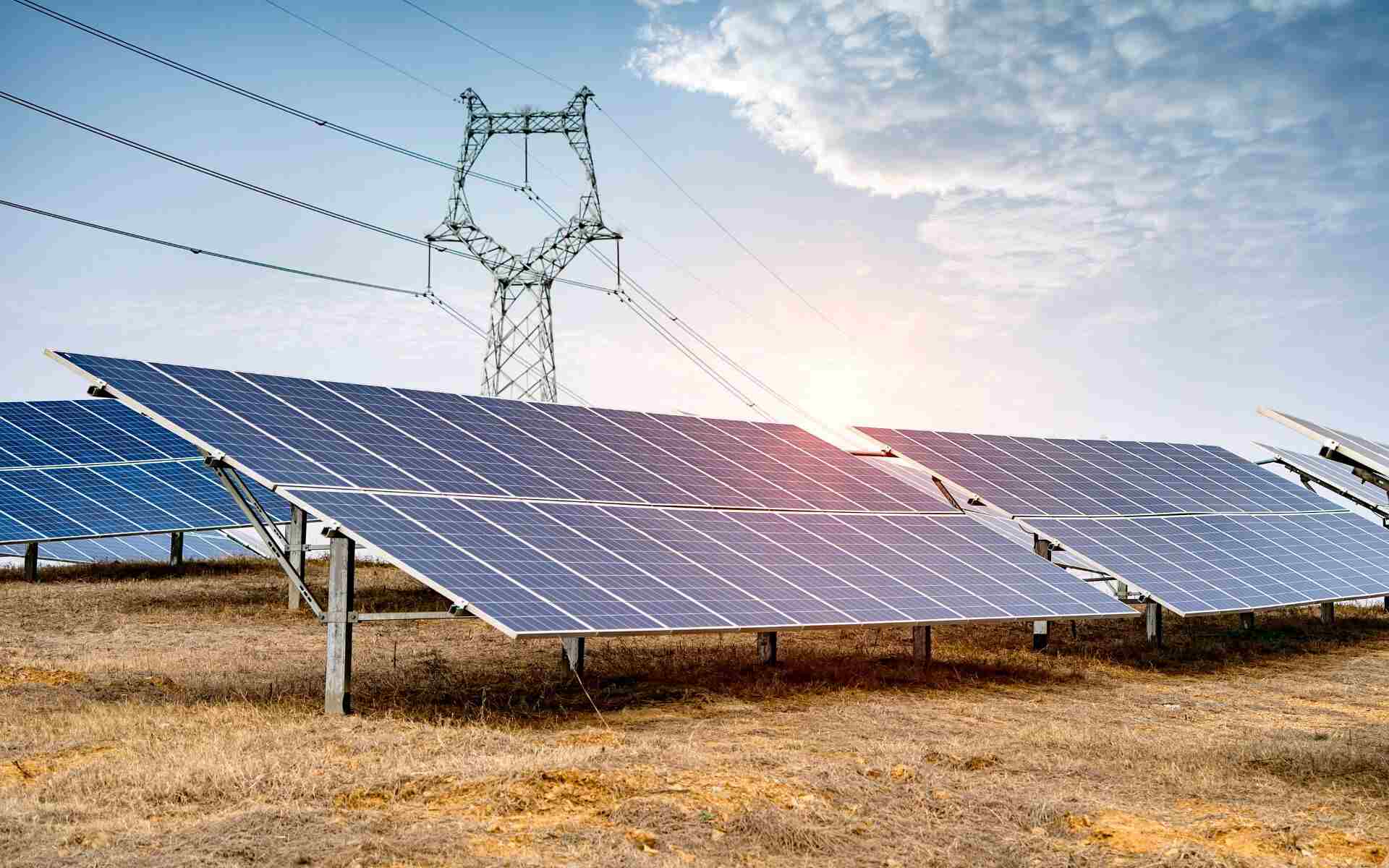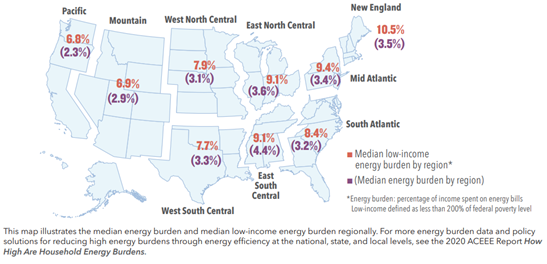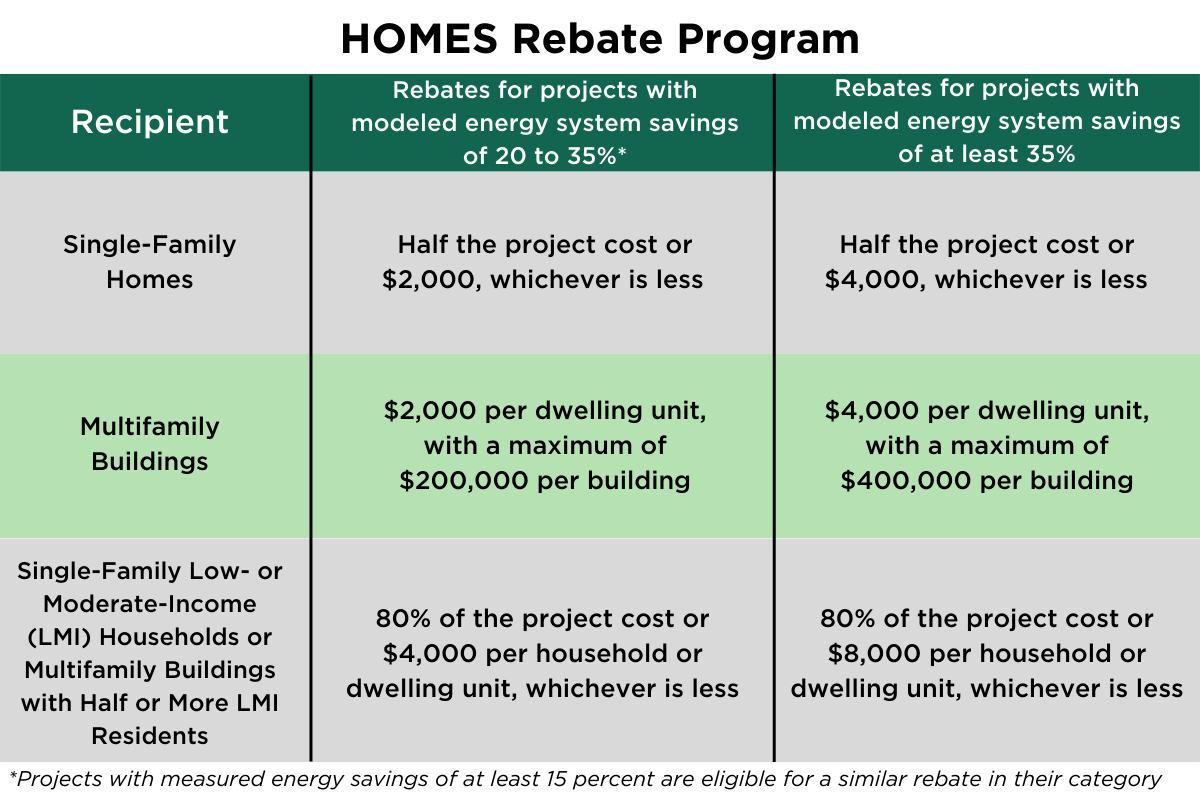How Utilities Can Encourage Electrification in Low-Income Communities

8 Min. Read
Energy equity is a prominent consideration for current electrification efforts. A major movement is underway at the federal, state, and local levels to ensure that low-income communities have fair and equitable access to electrification benefits, including electric vehicles (EV), EV charging, and whole-home electrification.
Energy equity is significant because low-income populations can benefit greatly from it yet lack the financial capacity to access it.
While federal, state, and local governments offer significant support to low-income persons, this article will discuss how utilities can play a role in providing powerful assistance by leading programs to pull together available resources from every level of government, making electrification easier and more accessible for your utility communities.
Expanding Access to Affordable and Accessible Energy Solutions
The emphasis on energy equity is based on the lack of access to clean, affordable energy in homes and transportation, which has historically disadvantaged low-income communities. This problem affects everyday life and leads to longer-term health issues from outdoor and indoor air pollution. There are several definitions for the term “low income.” However, the most relevant way to define it concerning energy equity is when utility bills comprise an excessively high portion of a household’s budget.
According to U.S. government statistics, low-income utility costs are 8.6% of average low-income household budgets, roughly three times that of the average non-low-income household at 3%. Keep in mind that these are average figures that vary by geography. The exhibit below depicts the distribution. In some areas, the energy burden can reach as high as 30%, and a stunning 44%, or 50 million households, are considered low-income. Low-income households are caught in a difficult spot and lack the financial ability to overcome the burden, but comprehensive utility and governmental support can help.
Median Energy Burdens by Region for Low-Income Households
Source: https://www.rff.org/publications/explainers/electricity-affordability-101/
Focusing on the obstacles lower-income communities face, the priority for these programs is helping economically-disadvantaged households reduce their utility costs. EVs are more economical to drive than traditional internal combustion engine vehicles (ICE) by offsetting the cost of gasoline and many vehicle maintenance needs, but they can increase household utility costs due to charging unless alternative energy sources such as solar panels or a battery storage system are used. Electric vehicles are substantial investments even after cost subsidies, so they may be further down the line, especially if lower-income households rely on public charging. At the same time, it is necessary to plan for EV charging infrastructure in the future in low-income areas so that lack of it is not a barrier to EV adoption in the future.
Ineffective insulation is an excellent example of an accessible and affordable improvement low-income households can make. Installing sufficient insulation can reduce energy costs and pay for itself in a few years by simply increasing the energy efficiency of the home. Federal subsidies in the Inflation Reduction Act provide a tax credit of up to $1,200 per project, making theses sustainability-focused home improvement project even more obtainable for low-income households.
Some cities and utilities are partnering to provide these free of charge or with rebates to qualifying low-income residents, as some low-income households may not have a high enough tax liability to benefit significantly from the credit. A great example of this is Colorado’s Affordable Residential Energy Program.
Electrification for cars, public transportation, home appliances, and heating also offers ways to reduce household energy costs and greenhouse gases. Federal and state support is essential, but this is an area where utilities can play a major role, benefiting the grid and low-income populations in your region.
The stock market is pessimistic about growth in U.S. electric utilities. Fuel costs are high, and replacing carbon fuels such as natural gas and propane with electricity drives additional revenue for electric utilities and lowers fuel costs, creating a win-win for utilities and customers.
Additionally, working with the local transportation authority on converting public transportation to electricity will help reduce or stabilize public transportation costs in a time when gasoline and other carbon-based fuel prices are volatile and change regularly. Electrifying public transportation saves $10,000 per year, as electricity is cheaper and cleaner than diesel, and EV buses are more affordable to maintain with fewer moving parts that require routine maintenance and potential repairs.
Utility growth in transportation electrification is another net positive for utilities, local governments, and low-income users, and can help keep costs for public transportation down for all parties. It is an excellent conversion point for utilities to contact cities and states to plan and form partnerships, supplemented by federal and state financial support.
Offering Financial Incentives and Assistance for Home Electrification Efforts
There is increasing federal and state support for electrification projects in low-income areas. Examples of programs and incentives provided under the federal Inflation Reduction Act include:
- The Energy Efficient Home Improvement Credit upgraded significantly to provide up to a $2,000 tax credit for heat pumps, building envelope improvements, and other energy improvements capped at $1,200. The key attraction is that these credits may be used again in consecutive years.
- The High-Efficiency Electric Home Rebate Program, with $4.5 billion to provide up to a total of $14,000 per household in rebates selected from the following options:
- $8,000 for heat pumps used for HVAC
- $1,750 for heat pump water heaters
- $840 for electric stoves, refrigerators, or heat pump clothes dryers
- $4,000 for electrical panel upgrades
- $2,500 for wiring
- $1,600 for insulation, air sealing, and ventilation
Those with an annual income of 80% or less of the area median income can get a low-income rebate of up to 100% of the project cost.
- With $4.3 billion in funding, the HOMES Rebate Program focuses on whole-home retrofits to reduce energy consumption. The rebate is based on the percentage projected energy savings for the project, as shown below.
- Funding of $1 billion for grants from the U.S. Department of Housing & Urban Development targeting affordable housing with improvements for more efficient electric and water supplies, electrification, energy storage, zero-carbon energy, and better indoor air quality.
- An EV tax credit of $7,500 per vehicle for consumers and businesses, EV charger credits of up to $1,000 for individuals, and up to $100,000 per charger for businesses. This is particularly significant for multi-family property owners and managers.
With a deep knowledge of electric power supply, comprehensive customer data, and relationships with electrical contractors, utilities are well-positioned to use this funding to help low-income customers by:
- Implementing low-income assistance programs for whole-home electrification projects, drawing on available funding, including their own. A good example is Xcel Energy, Colorado’s top utility, which offers rebates (rather than tax credits) for heat pumps that are on top of federal incentives.
- Organizing and assisting community outreach programs for micro/nano grids can help support lower-income areas. For example, solar integration can provide low-cost energy to residents and reduce the grid’s load.
- Providing an additional low-income rebate and incentives for EV purchases and charging equipment installations. While EV adoption may not be top of mind for low-income households, equitable EV ownership will be essential.
- Utilities can drive equitable electrification by collaborating with government and non-profit organizations to secure additional funding and resources for electrification projects.
Citie governments may also offer incentives. For example, Denver, CO provides rebates for various heat pumps and even up to $1,200 for electric bicycles. Again, these stack onto other incentives and can be combined under a comprehensive electrification program.
Education and Outreach to Promote Electrification Benefits and Opportunities
The first mission is to raise awareness in low-income communities about the positive environmental, economic, and health aspects of electrification and the new funding available to deliver it. Low-income customers heavily burdened by energy and other costs may not have the time to research for help. Utilities have a direct line to such customers through their customer databases and can be proactive in communicating these opportunities to their customers, while ensuring the process is streamlined to avoid discouraging any potential beneficiaries of the program.
Utilities can partner with local and state governments and non-profit organizations such as the Center for Sustainable Energy to drive the good news home and develop tailored programs. Targeted marketing campaigns and community events are vital tools to reach low-income residents.
It is crucial to develop educational materials tailored to the particular community to educate residents on the issues and their options, including action plans going forward. It is also essential to organize to deliver on any promises and maintain constant communication on progress and issues.
The U.S. Department of Energy (DOE) Better Buildings Initiative is a successful example of how to develop and execute successful programs in clean energy. Its Resource Center is a comprehensive source of information on clean buildings, and its Clean Energy for Low Income Accelerator (CELIA) Toolkit provides resources and tools based on DOE’s success in that area.
Seamlessly Encourage Electrification in Your Community with Qmerit
Energy equity is imperative to address the pervasive issue of the often-crushing energy burden on low-income populations. The onset of new clean energy technologies offers a chance to do so, and utilities can lead energy equity by partnering with federal, state, and local governments and firms focused on installing electrification technology. Qmerit can help.
Our comprehensive, single-source solutions for utilities can help you create programs that bridge available resources and incentives for your customers, improve grid reliability, and achieve your decarbonization goals.
Learn more about Qmerit’s commitment to supporting utilities in their efforts to promote electrification in low-income communities. Find out how you can contribute to a more equitable and sustainable energy future by contacting Qmerit today, and enjoy working with the most trusted electrification solutions provider as we make it easy for your customers to go electric.


